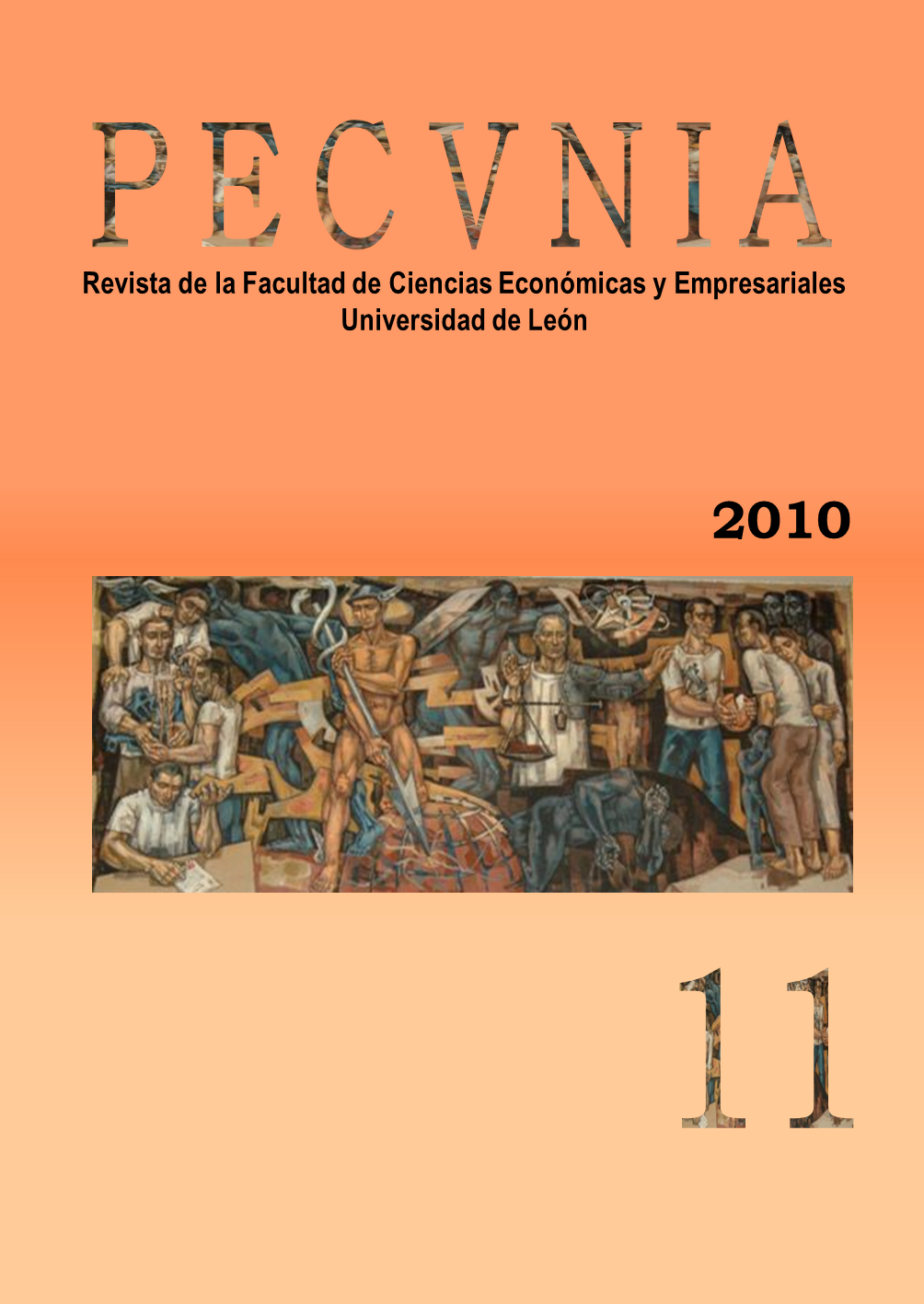Medidas de riesgo para riesgo operacional con un modelo de perdida agregada de Poisson-Lindley
DOI:
https://doi.org/10.18002/pec.v0i11.627Palavras-chave:
Modelo de pérdida agregada, Distribución de Poisson-Lindley, Distribución triangular, Distribución gamma, Aggregate Loss Model, Poisson-Lindley distribution, Triangular distribution, Gamma distributionResumo
En este trabajo se considera la determinación de medidas de riesgo en riesgo operacional, es decir, la determinación de cuantiles de alto orden. Se considera la aproximación basada en la distribución de la pérdida dentro de la aproximación avanzada. Se calculan, y se comparan entre si, las medidas de riesgo a partir de la distribución de la pérdida agregada y a partir de la distribución predictiva considerando como funciones estructura para los perfiles de riesgo las distribuciones Triangular y Gamma.This paper considers the determination of the risk measures in Operational Risk, i.e. the determination of a high level quantile. The Loss Distribution Approach in the Advanced Measurement Approach is adopted. The risk measures, obtained from the aggregate loss distribution and from the predictive distribution are determined and compared, using the Triangular and Gamma distributions as structure functions of the risk profiles.
Downloads
Referências
BIS (2005). Basel II: International convergence of capital measurement and capital standard: A revised framework. Bank for International Settlements (BIS), http://www.bis.org/index.htm
Carrillo-Menéndez, S. y Suarez, A. (2006). “Effective measurement of the operational risk”, Estabilidad financier, Banco de España, 11, pp. 61-90.
Chavez-Demoulin, V.; Embrechts, P. y Neslehová, J. (2006). “Quantitative models for operational risk: Extremes, dependence and aggregation”, Journal of Banking and Finance, 30 (10), pp. 2635-2658.
Cruz, M.G. (2002). Modelling, measuring and hedging operational risk. UK: John Wiley and Sons.
Ghitany, M.E. y Al-Mutairi, D.K. (2008). “Estimation methods for the discrete Poisson-Lindley distribution”, Journal of Statistical Computation and Simulation, 79 (3), pp. 279-287.
Ghitany, M.E.; Al-Mutairi, D.K. y Nadarajah, S. (2009). “Zero-truncated Poisson-Lindley distribution and its application”, Mathematics and Computers in Simulation, 79 (1), pp.1-9.
Grandell, J. (1997). Mixed poisson processes. New York: Chapman and Hall.
Hernández-Bastida, A.; Fernández-Sánchez, M.P y Gómez-Déniz, E (2009). “The net bayes premium with dependence between the risk profiles”, Insurance:Mathematics and Economics, 45, pp. 247-254.
Hernández-Bastida, A.; Fernández-Sánchez, M.P. y Gómez-Déniz, E. (2010). “Collective risk model: Poisson-Lindley and exponential distributions for bayes premium and operational risk”, Journal of Statistical Computation and Simulation, to appear.
Johnson, D. (1997). “The triangular distribution as a proxy for the beta distribution in risk analysis”, Journal of the Royal Stat. Society, Series D (The Statistician), 46 (3), pp. 388-398.
Karlis, D. y Xekalaki, E. (2005). “Mixed poisson distributions”, International Statistical Review, 73, pp. 35-58.
Klugman, S.A.; Panjer, H.H. and Willmot, G.E. (2004). Loss models: From data to decision. New York: Willey and Sons.
Kozubowski, T.J. and Panoska, A.K. (2005). “A mixed bivariate distribution with exponential and geometric marginals”, Journal of Statistical Planning and Inference, 234, pp. 501-520.
Lambrigger, D.D.; Shevchenko, P.V. and Wüthrich, M.V. (2007). “The quantification of operational risk using internal data, relevant external data and expert opinions”, The Journal of Operational Risk, 2-3, pp. 3-27.
Lindley, D.V. (1958). “Fiducial distributions and Bayes’s theorem”, Journal of the Royal Stat. Soc. Series B, 1; pp. 102-107.
McNeil, A.; Frey, R. y Embrechts, P. (2005). Quantitative risk management: Concepts, techniques and tools. New Jersey (USA): Princeton University Press.
Nadarajah, S. y Kotz, S. (2006a). “Compound mixed Poisson distributions I”, Scandinavian Actuarial Journal, 3, pp. 141-162.
Nadarajah, S. y Kotz, S. (2006b). “Compound mixed Poisson distributions II”, Scandinavian Actuarial Journal, 3, pp. 163-181.
Nikoloulopoulos, A.K. y Karlis, D. (2008). “On modelling count data: a comparison of some well-known discrete distributions”, Journal of Statistical Computation and Simulation, 78 (3), pp. 437-457.
Sandström, A. (2006). Solvency: Models, assessment and regulation. Boca Raton (FL): Chapman & Hall/CRC.
Sankaran, M. (1971). “The discrete Poisson-Lindley distribution”, Biometrics, 26 (1), pp. 145-149.
Shevchenko, P.V. (2008). “Estimation of operational risk capital charge under parameter uncertainty”, The Journal of Operational Risk, 1 (3), pp. 51-63.
Shevchenko, P.V. y Wüthrich, M.V. (2006). “The structural modelling of operational risk via bayesian inference: Combining loss data with expert opinions”, The Journal of Operational Risk, 1 (3), pp. 3-26.
Wüthrich, M.V. (2006). “Premium liability risks: Modelling small claims”, Bulletin of the Swiss Association of Actuaries, 1, pp. 27-38.
Downloads
Publicado
Como Citar
Edição
Secção
Licença
Direitos de Autor (c) 2010 Agustín Hernández Bastida, Pilar Fernández Sánchez

Este trabalho encontra-se publicado com a Licença Internacional Creative Commons Atribuição-NãoComercial-CompartilhaIgual 4.0.
Los autores que publican en esta revista están de acuerdo con los siguientes términos:- Los autores ceden de forma no exclusiva los derechos de explotación (reproducción, distribución, comunicación pública, transformación) a la Universidad de León, por lo que pueden establecer, por separado, acuerdos adicionales para la distribución no exclusiva de la versión de la obra publicada en la revista (por ejemplo, alojarlo en un repositorio institucional o publicarlo en un libro), con un reconocimiento de su publicación inicial en esta revista.
- Este trabajo se encuentra bajo la Creative Commons Attribution-NonCommercial-ShareAlike 4.0 International License. Puede consultarse desde aquí la versión informativa y el texto legal de la licencia.
- Se permite y se anima a los autores a difundir electrónicamente las versiones pre-print (versión antes de ser evaluada) y/o post-print (versión evaluada y aceptada para su publicación) de sus obras antes de su publicación, ya que favorece su circulación y difusión más temprana y con ello un posible aumento en su citación y alcance entre la comunidad académica.












